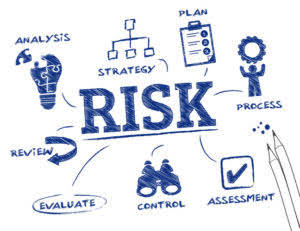
By assigning probabilities to each stage, businesses can estimate the likelihood of closing deals and generate more accurate sales forecasts. This method is particularly effective for companies with a well-defined sales process and a structured sales pipeline. With higher annual revenues, bigger budgets, and diverse sales teams, forecasting accuracy plays a pivotal role in maintaining operational efficiency and meeting stakeholder expectations. In these scenarios, relying on the right sales forecasting methods—such as time series analysis, AI forecasting, and qualitative forecasting —becomes essential.

Step 1:Determine Your Forecast Period and Goals
Sales forecasting is crucial for businesses to set realistic targets and optimize performance. A study found that 80% of sales organizations have forecast accuracy below 75%, ideally between 90% and 95%. If your forecasting is accurate, it can lead to better resource allocation, https://www.bookstime.com/articles/gaap-for-nonprofits missed sales targets, and financial stability. Such research can be particularly useful when entering new markets or launching new products. However, significant resources and careful design are required to ensure the accuracy and relevance of the collected data. The salesforce composite method collects sales estimates from the company representatives, offering ground-level insights.

The difference between sales forecasting and sales planning
Some of those factors might be hard to show in specific numbers, which is a downside of QuickBooks this approach. Accurate forecasts depend on accurate inputs into the model, which is not always possible. What this approach doesn’t take into account, though, is the age of a given opportunity.
- Track deal stages and assign close probabilities (like 30% for discovery, 80% for negotiation).
- Intuitive forecasting relies on gut instinct and subjective judgment for sales predictions.
- Sales forecasting is the process of predicting future sales revenue by analyzing data on past sales, market trends, and customer behavior.
- This add-on tool streamlines your sales forecasting process and allows your sales teams to work faster in Salesforce.
- Regularly repeating this process helps keep your forecasts reliable and relevant.
- Lead-to-sales conversion rate refers to the percentage of leads that pass through the entire sales pipeline and convert into paying customers.
Time series analysis (Trend analysis)

All Nutshell subscriptions include unlimited contact and data storage and access to their friendly, Michigan-based support team. Leverage modern forecasting tools like Scratchpad to instantly enhance your forecasting capabilities. Evaluate how your forecasts are doing and pivot if needed if a method isn’t working out for you.

When a business expands into a new territory, assigns a different territory to a sales rep, or introduces a new territory management plan, there is a possibility of a temporary dip in sales. This discrepancy indicates that more effort and performance improvements are necessary to steer the company toward profitability. A staggering 43% of organizations missed their sales goals by more than 10%.
- Common issues include changes in customer behavior patterns or unexpected shifts in industry dynamics.
- A common first step is to determine market potential, or total industry-wide sales expected in a particular product category for the time period of interest.
- For example, with a trend analysis, the marketing executive identifies the rate at which a company’s sales have grown in the past and uses that rate to estimate future sales.
- Consistently missing sales projections creates unpredictability and reduces confidence in future forecasts.
- Teams that lack diversity may not offer as much in terms of idea and input quality.
- These processes are judgment techniques and surveys, time series techniques, spending correlates and other models, and market tests.
From historical data analysis to regression and time series organizations usually use only one method for forecasting sales. forecasting, we’ll cover the techniques that can guide your sales strategy and improve your forecasting accuracy. Lead-driven forecasting is a sales forecasting method that uses the volume of leads entering the sales pipeline and their historical conversion rates to estimate future sales revenue. This method ties sales projections directly to the performance of marketing and sales efforts, making it an essential tool for businesses with a high focus on lead generation and nurturing strategies.

